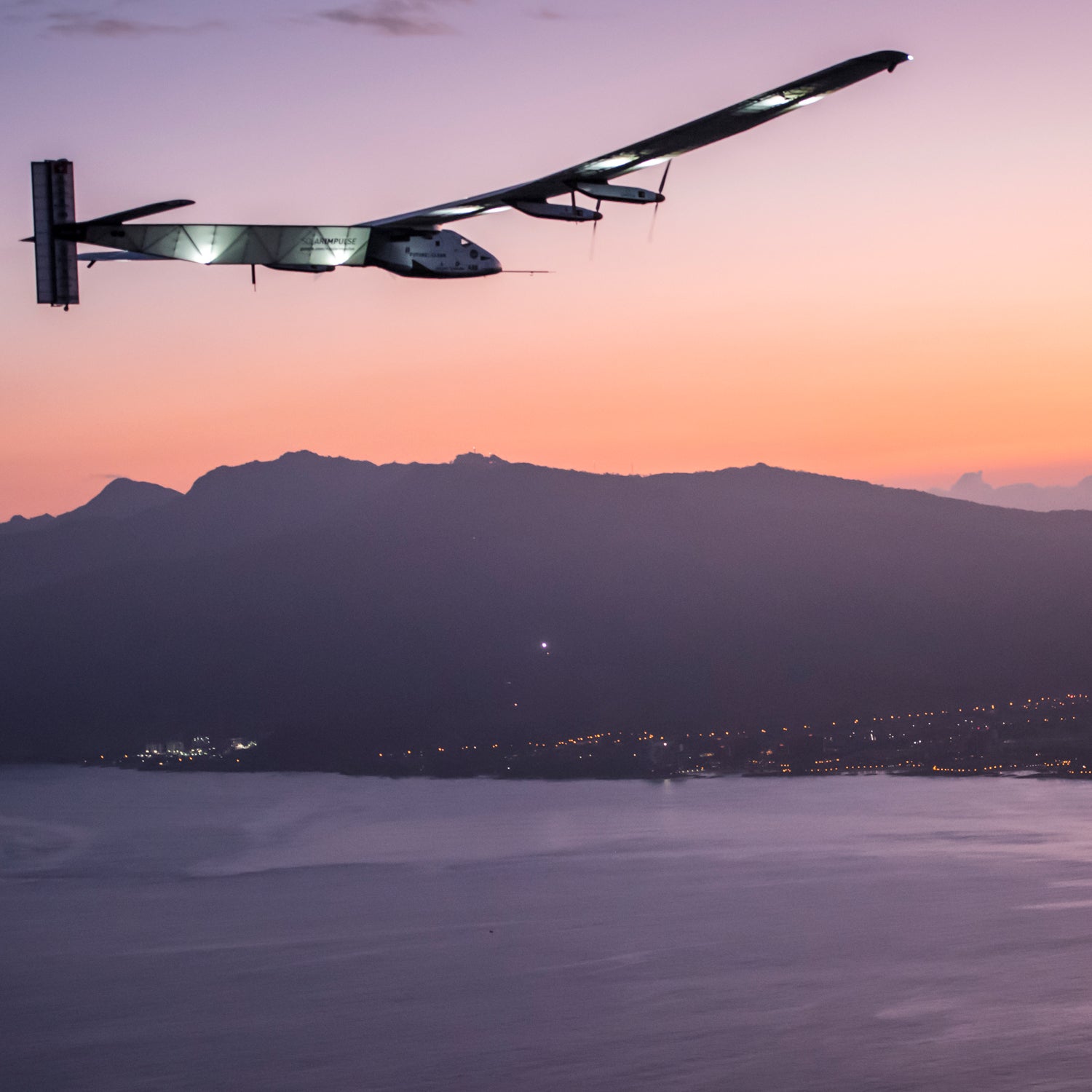Batteries aboard the Solar Impulse were badly damaged during a flight from Japan to Hawaii this week, according to a news release and blog post on the . The team expects the necessary repairs to push the next leg of the solar-powered plane’s journey to at least April 2016.
“Setbacks are part of the challenges of a project which is pushing technological boundaries to the limits,” the news release said. “This delay will in no way influence the overall objectives of this pioneering endeavor.”
As ���ϳԹ��� wrote earlier this month, the Solar Impulse crew recently set a world record for the longest uninterrupted solo flight in an airplane during its journey from Nagoya, Japan, to Kalaeloa, Hawaii. On its most recent flight, however, the battery temperature increased at an alarming rate, grounding the plane. Mission team representatives say the damage to the batteries, while irreversible, does not represent a technical failure of the engine design, but rather a mistake in the cooling design of the batteries.
In a released Wednesday, Solar Impulse chairman and pilot Bertrand Piccard said that the repairs will take too long to complete by the end of the season. As a result, the next leg of the journey, from Hawaii to Arizona, will be pushed to next year.
“Making the impossible happen takes more time than the possible,” he said in the video. “I really hope that the supporters will continue to support the Future Is Clean initiative and continue to collect millions of voices in favor of clean technologies.”


